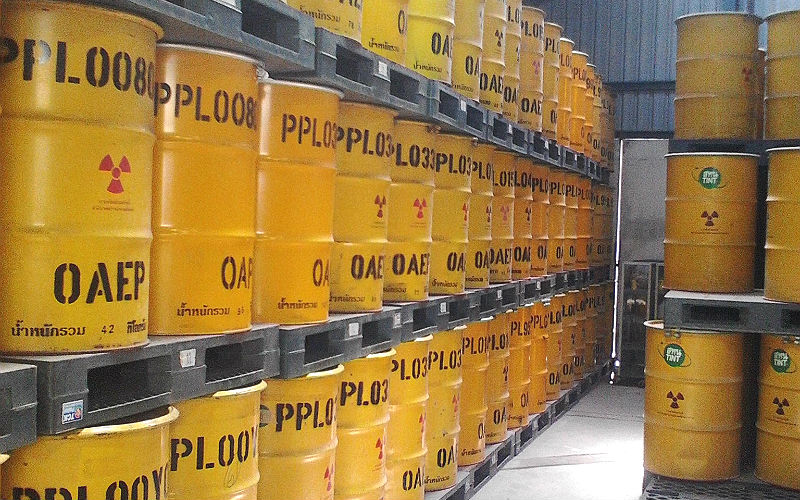
By Suzanne Rhodes, special to Statehouse Report | During the Cold War effort to develop a large arsenal of weapons, millions of gallons of chemical and radioactive wastes were generated at the Savannah River Site (SRS) near Aiken, and at other federal facilities where nuclear materials like plutonium were produced and processed. Cleaning up that waste at SRS continues to be a major issue of concern.
Although the volume of liquid nuclear waste has been reduced in some of the tanks and 8 of 51 tanks have been closed, the total volume of waste has stayed about the same during the last 40 years. When tanks, some more than 60 years old, develop cracks, the wastes are thinned to enable pumping to a level below the cracks into more dependable tanks. The SRS technical staff has done a remarkable job, but the liquid waste remains a serious challenge in a region with a high water table and a history of earthquakes. The U.S. Department of Energy (DOE) has quoted former Gov. Nikki Haley as saying: “The high-level radioactive liquid waste stored in aging tanks at SRS poses the single largest environmental threat in South Carolina.”
Most of the wastes now at SRS could stay for a long time – hopefully in a safer, glassified form instead of the current tanks with 35 million gallons of liquid waste. The League of Women Voters of South Carolina has expressed concern about this biohazard since the 1970s. We hope fellow citizens and our leadership will begin to more vocally support cleanup. The dream of permanent off-site storage elsewhere for most of these wastes remains illusory. No one wants them.
Waste cleanup takes a backseat to new missions
South Carolina’s members of Congress have failed to adequately fund SRS cleanup. Rather, they are promoting huge construction projects that run over budget, are always behind schedule and at risk of failure, such as the mismanaged plutonium fuel (MOX) project. Production of plutonium “pits” (triggers for bombs) is the current scheme to repurpose the shell of the MOX facility, which is ultimately likely to be terminated. Currently this project costs taxpayers $1.2 million per day, according to DOE.
More bombs equals more waste
This country owns almost half of the world’s nuclear bombs. The new pit-production proposal, which DOE claims would create hundreds of jobs, is based on a purported need for pits for old- and new-generation weapons. If this proposal is enacted, it may also further slow tank cleanup schedules, as funding must compete with other requests for congressional appropriations. The League supports the closing of the tanks and opposes the processing of more bomb material at SRS.
Columbia resident Suzanne Rhodes has a master’s degree in public health policy. A longtime member of the League of Women Voters of South Carolina, she serves at the league’s nuclear waste specialist.
- Have a comment? Send it to: feedback@statehousereport.com.


